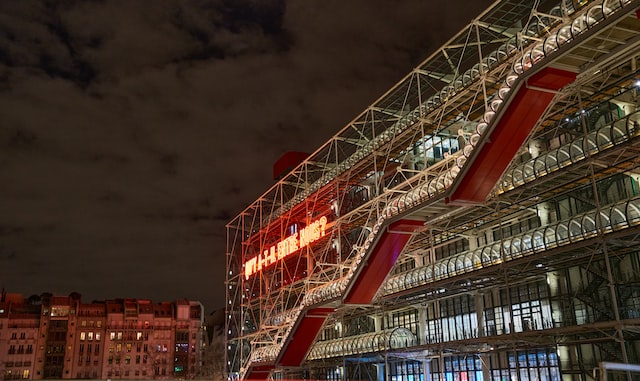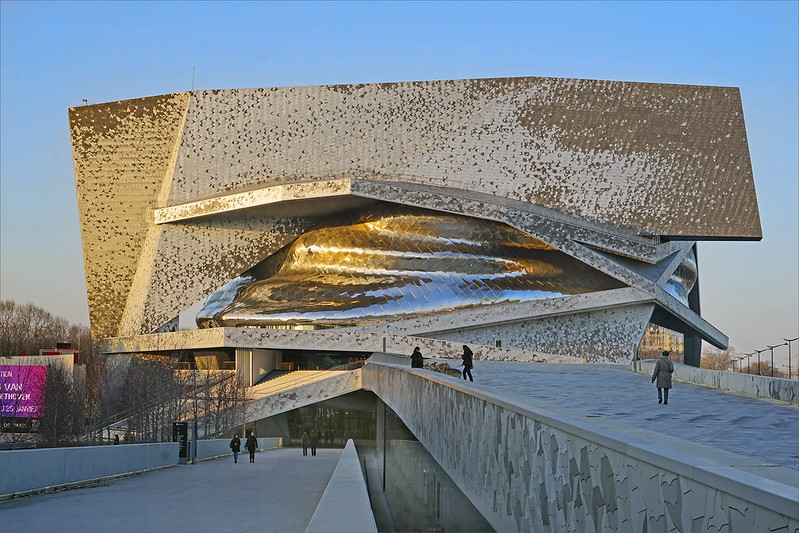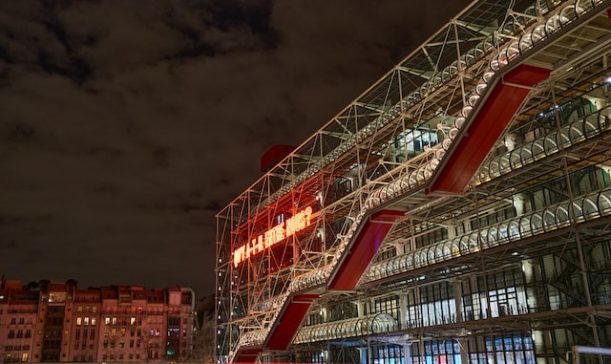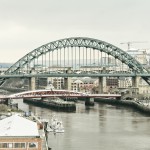Brutalist architecture is a style that emerged in the 1950s and gained popularity in the 1960s and 1970s. It is characterized by its use of raw, unfinished concrete as the primary building material, and is often associated with an austere, functional aesthetic.
In Paris, brutalist architecture can be found in a variety of buildings, including government buildings, housing projects, and cultural centers.
Centre Georges Pompidou
One of the most well-known examples of brutalist architecture in Paris is the Centre Georges Pompidou, also known as the Beaubourg Museum. Designed by architects Renzo Piano and Richard Rogers, the Centre Georges Pompidou was completed in 1977 and is known for its bold use of color and its unique design, which features all of the building’s functional elements, such as pipes and ducts, on the exterior of the building.
 Image source: Unsplash
Image source: Unsplash
La Cité de la Muette
Another notable example of brutalist architecture in Paris is the housing project La Cité de la Muette, located in the 16th arrondissement. Designed by Jean Renaudie and completed in 1974, La Cité de la Muette is a complex of high-rise apartment buildings that were designed to provide affordable housing for the city’s residents. The buildings feature a repetitive, modular design and are constructed of raw concrete, giving them a distinctive brutalist aesthetic.
The Philharmonie de Paris
In addition to government buildings and housing projects, Paris is also home to a number of cultural centers that showcase brutalist architecture. The Philharmonie de Paris, a concert hall located in the 19th arrondissement, is a good example. Designed by Jean Nouvel and completed in 2015, the Philharmonie de Paris is a massive complex that includes a concert hall, exhibition spaces, and a restaurant. The building’s raw concrete exterior and geometric forms are characteristic of brutalist architecture.

Image source: Flickr
Despite the popularity of brutalist architecture in the mid-20th century, it has been met with mixed reactions over the years. Some people appreciate the bold, functional aesthetic of brutalist buildings, while others find them cold and uninviting. In Paris, as in other cities, there have been debates about the preservation of brutalist buildings, with some arguing that they are an important part of the city’s architectural history and others calling for their demolition.
Overall, brutalist architecture in Paris is a fascinating and distinctive aspect of the city’s built environment. From the Centre Georges Pompidou to the Philharmonie de Paris, these raw concrete structures stand out as landmarks of an architectural style that was once at the forefront of modern design. Whether you love or hate brutalist architecture, it is undeniable that these buildings have made a lasting impact on the city of Paris and continue to be a source of fascination for visitors and residents alike.






